|
|
|
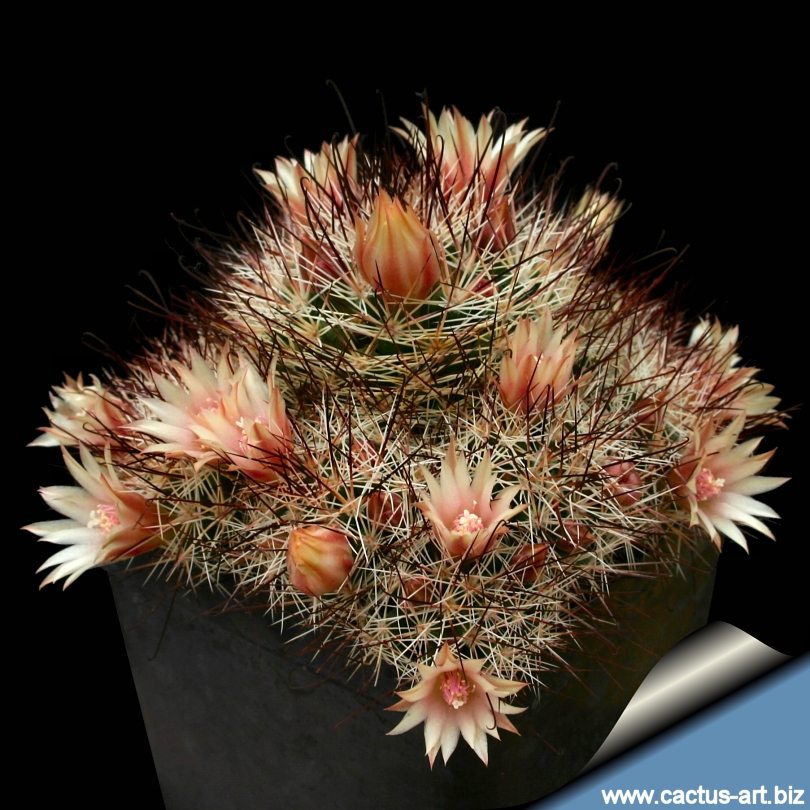
M. marcosi is a beautiful plant with (usually) white radial spines and
reddish-brown centrals, but it is also available in a wide range of
spine colours. (white,
yellow, red and dark-brown)
|
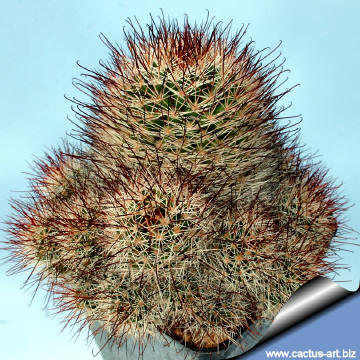 |
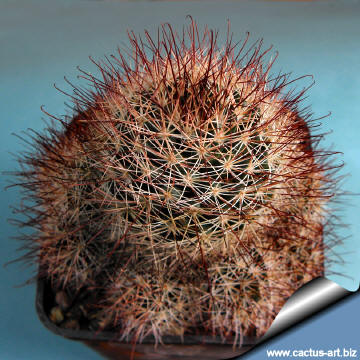 |
|
. |
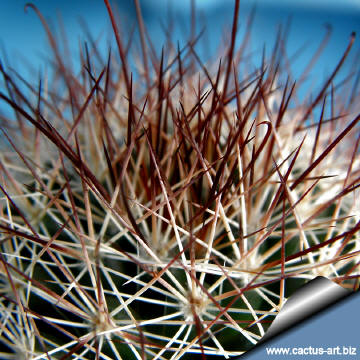 |
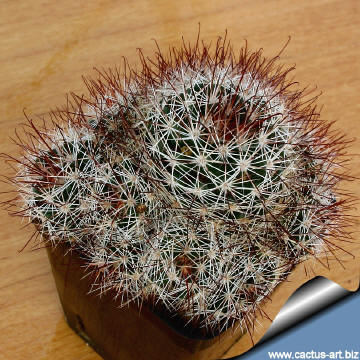 |
|
. |
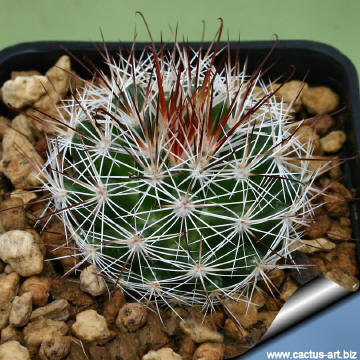 |
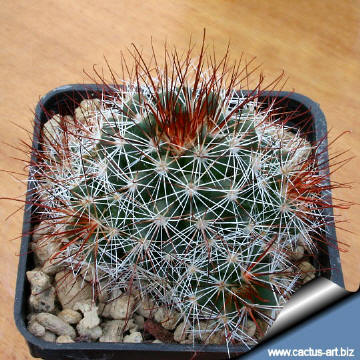 |
|
Photo of conspecific taxa, varieties, forms and
cultivars of Mammillaria marcosii.
|
|


Advertising
|
|
|
|
|
Scientific name:
Mammillaria marcosii
W.A.Fitz Maur.,
B.Fitz Maur. & Glass 1997
Published in:Cactus
and Succulent Journal (U.S.).
69(1): 10-14 (1997)
Field collection number: Marcos Sierra 031 (CANTE,
holotype; isotypes in MEXU and K).
Origin: Northeastern Guanajuato
(Municipio
Atarjea), Mexico. Altitude 1.400m.
Habitat: Grows on volcanic rocks
on almost
vertical cliffs.
Conservation status: Listed in
CITES appendix 2.
Etymology:
Named after
Marcos Sierra Pichardo, Mexican cactus grower at El Cante, San
Miguel de Allende, Guanajuato who discovered this species.
|
|
Description:
M. marcosii is a small cactus that readily forms irregular clumps
with dense spination. In habitat the clumps may grow up
to 25 cm in
diameter, with up to 30 heads. The spines are bicoloured (usually red and
white, but
they may occur in a wide range of
colours)
Stems: Low, round to short cylindrical, up to 5 cm in diameter.
Without latex.
Tubercles: Soft, cylindrical, with round tips. In the axil there
is wool and up to 15 bristles,
up to 15 mm long.
Radial spines: 16 - 25, radiating, needle-like, 4 - 12 mm long.
Central spines: 7 - 14, mostly needle-like, white, yellow,
reddish brown or brown, 10 - 20 mm long, one of which is descending and
variably hooked, all others straight.
Flower: Campanulated, up to 10 mm in diameter, yellowish or
creamy-white, with pink throat and darker pinkish midrib, stigma pale
yellow.
Fruit: Red, egg-shaped, 6 - 13 mm long, not arising above the
spines.
Seed: Brownish-black.
|
|
|
|
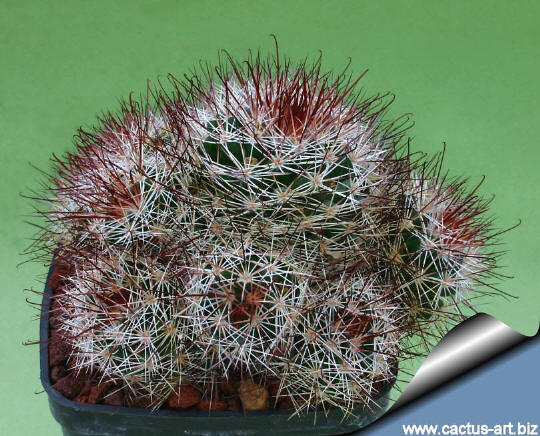
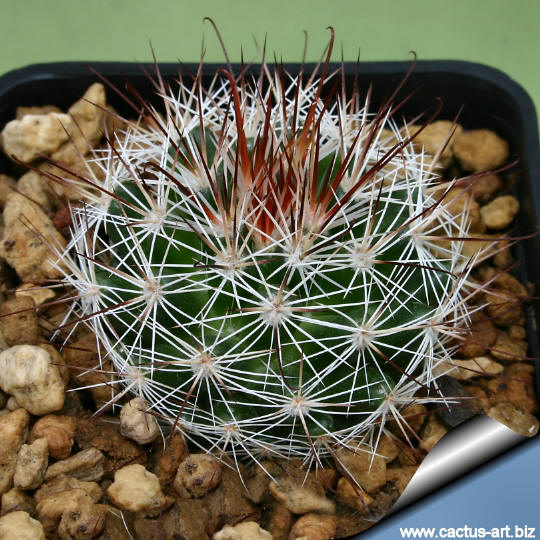 Cultivation: It is a slow growing species
of easy culture, recommended for any collection that needs
lots of light with ample airflow. Water regularly in summer, but do
not overwater (very
wet-sensitively, especially in light of its small root system)
Water thoroughly only if soil is dry to
the touch, let soil dry in between to prevent root rot,
keep dry in
winter. Use a very porous
mineral-based potting mix, with excellent drainage, as can be achieved by the addition
of extra perlite
or pumice. Feed with a high potassium
fertilizer in summer.
Care must be taken with watering as
they tends
to become swollen and untidy in growth habit if given too much
water and shade.
Sun Exposure: High levels of light are needed to
flower and for good spine development.
Can be sunburned if moved
from shade/greenhouse into full sun too quickly. During the spring it
may be able to take full sun until the heat arrives at the end of
spring. In an area that has hot afternoon sun, it may be able to take
full morning sun, but requires afternoon shade or afternoon light shade.
If grown correctly, it will reward the grower with generous
displays of flowers.
It is quite frost resistant if
kept dry, hardy as low as -5° C (or less) A resting period in winter and strong light are necessary so that it can
flower properly.
Clustering in cultivation after several years and easily flowered.
For best results, use a shallow pot, and only use the smallest
diameter pot that will accommodate the plant. Sensitive to red
spider mite. Overhead watering is helpful in controlling mites.
Propagation: Direct sow after last frost
(usually) or division, wait
until the
offsets that appear at the
base of old clustered
specimens
are 1/3 the size of the parent and then detach and plant.
|
|